 |
Stage 2022/12 [SA012] | ||
|
La Poma - Payogasta |
|||
| 47 km / 29 mi | |||
| 200 Hm (garmin edge 1000) max. Altitude: 2990m | |||
Cycling Ruta 40 from La Poma to Payogasta |
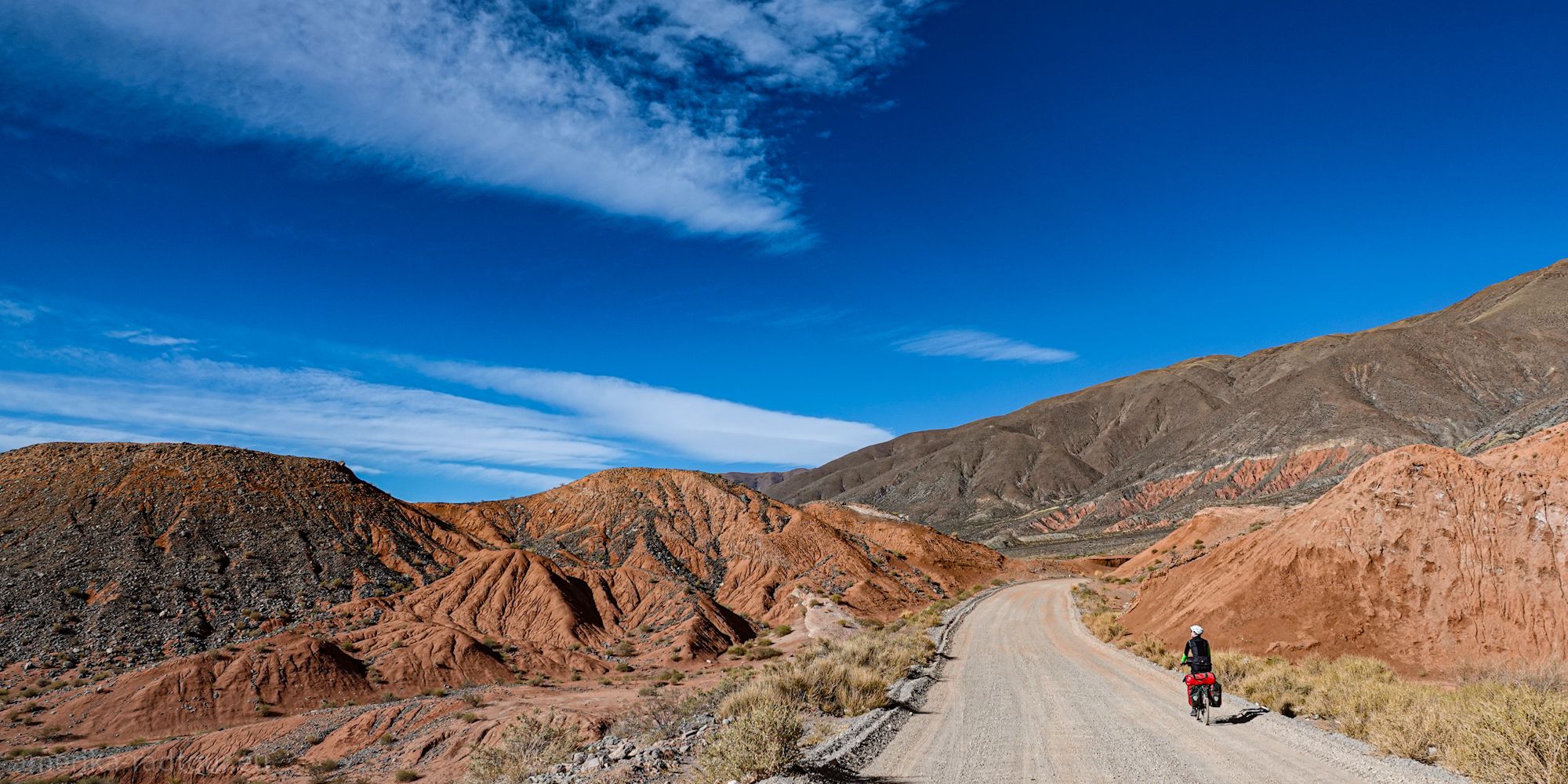 The night is cold in La Poma too. The rooms are not heated, but at least the shower has hot water. Breakfast is also sparse; in the morning there is either toasted white bread (if you're lucky with dulce de leche, a local Nutella substitute) or biscuits. There isn't much of a breakfast culture here. Coffee or tea and a dry piece of bread seems to be the norm here. The simple breakfast, however, has the advantage that we are on our bicycles and setting off quite early. We leave La Poma heading south and as soon as the town is behind us, we ride through a colourful landscape with colourful slopes to our left and right. The night is cold in La Poma too. The rooms are not heated, but at least the shower has hot water. Breakfast is also sparse; in the morning there is either toasted white bread (if you're lucky with dulce de leche, a local Nutella substitute) or biscuits. There isn't much of a breakfast culture here. Coffee or tea and a dry piece of bread seems to be the norm here. The simple breakfast, however, has the advantage that we are on our bicycles and setting off quite early. We leave La Poma heading south and as soon as the town is behind us, we ride through a colourful landscape with colourful slopes to our left and right. |
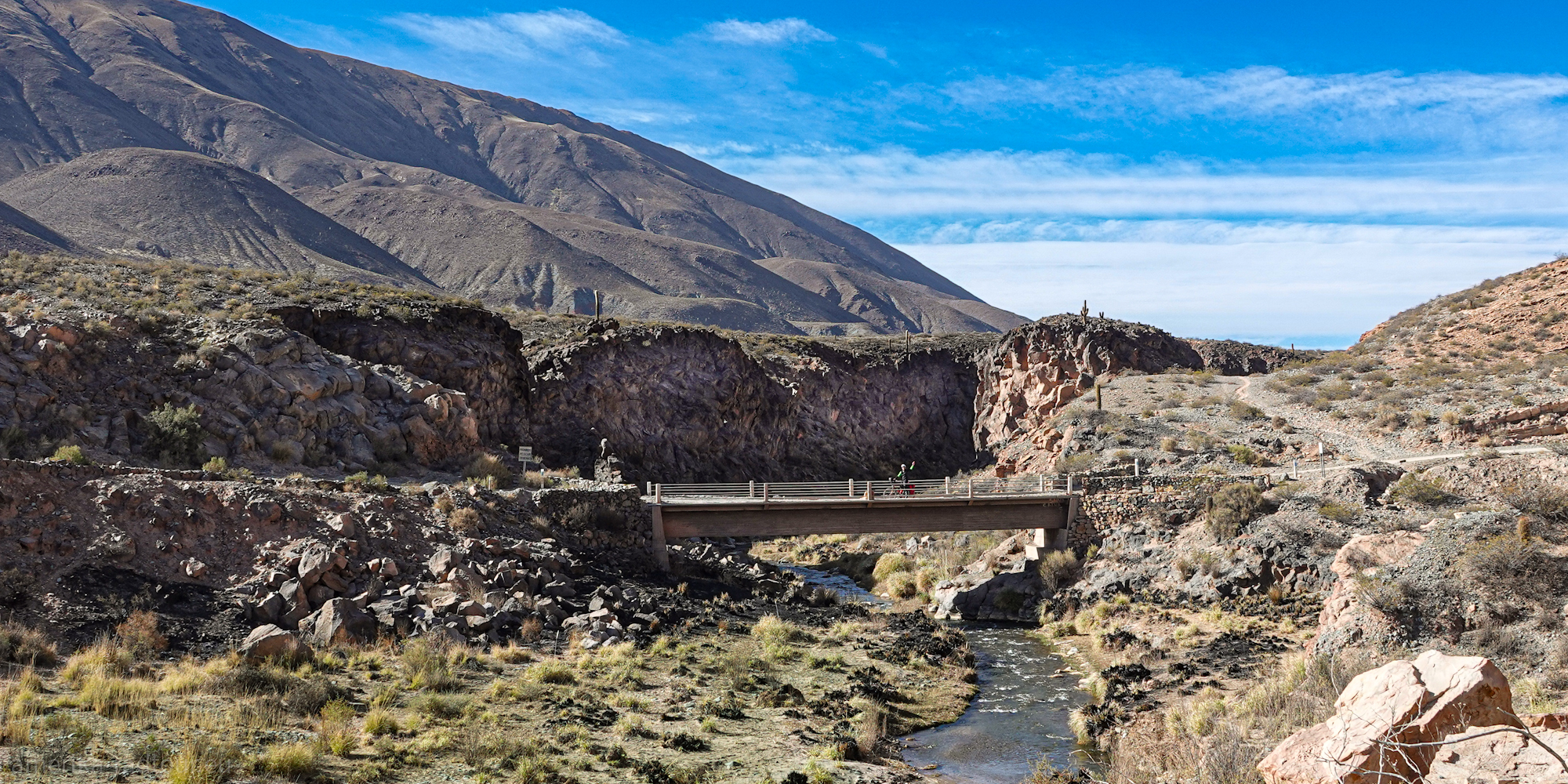 Just before we get back onto Ruta 40, we cross the Río Calchaquí again. Fortunately, this time the crossing happens using a bridge, a nice change to the crossings we did yesterday. This way, my shoes stay dry. Sounds like a good start to the day! Just before we get back onto Ruta 40, we cross the Río Calchaquí again. Fortunately, this time the crossing happens using a bridge, a nice change to the crossings we did yesterday. This way, my shoes stay dry. Sounds like a good start to the day! |
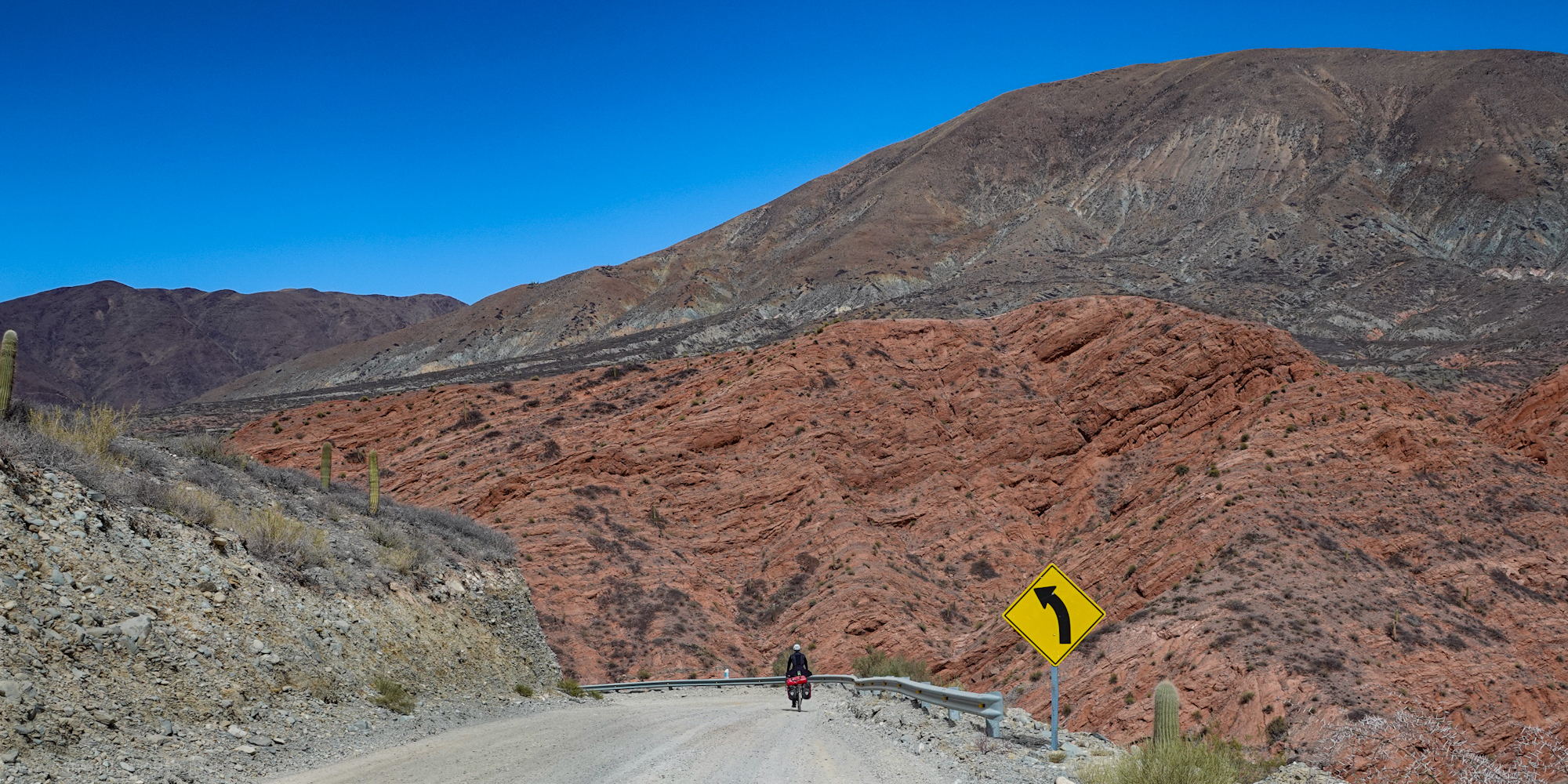 The road follows the Valles Calchaquiés all the way to Cafayate. As the valley is quite isolated in the mountains, it has long been spared from conquest and its geographical isolation has led to a very high proportion of indigenous people in the valley. Even today, the valley lies away from any traffic routes and therefor quality and traffic load of Ruta 40 here are low. The road follows the Valles Calchaquiés all the way to Cafayate. As the valley is quite isolated in the mountains, it has long been spared from conquest and its geographical isolation has led to a very high proportion of indigenous people in the valley. Even today, the valley lies away from any traffic routes and therefor quality and traffic load of Ruta 40 here are low. |
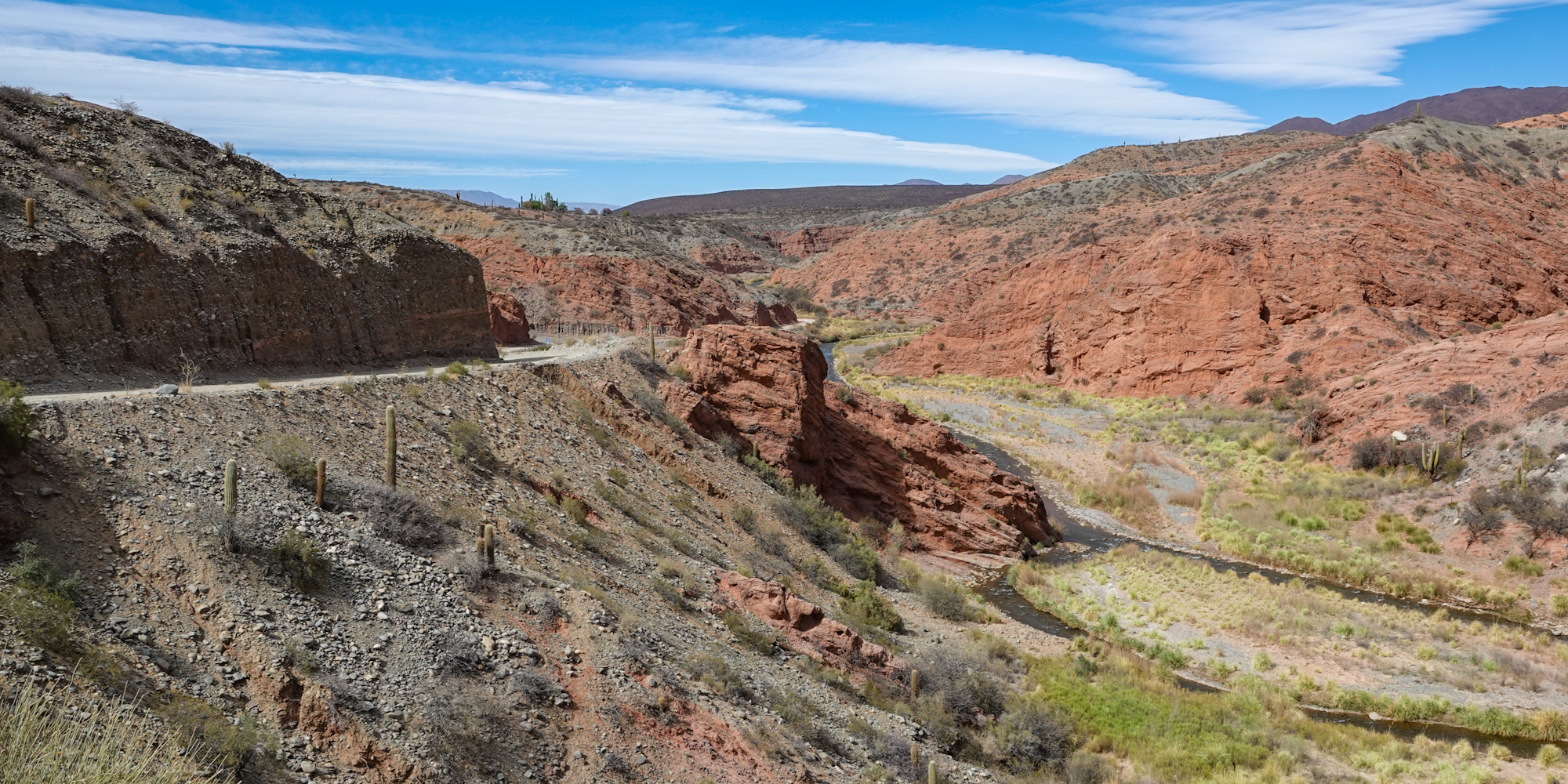 The river carries little water at the beginning of September, but it is enough to provide a livelihood: in addition to growing food for personal consumption, peppers are grown here on a large scale and there are even larger areas of vineyards in the Calchaquiés Valley. Large multinational wine companies have set up business in some areas. The river carries little water at the beginning of September, but it is enough to provide a livelihood: in addition to growing food for personal consumption, peppers are grown here on a large scale and there are even larger areas of vineyards in the Calchaquiés Valley. Large multinational wine companies have set up business in some areas. |
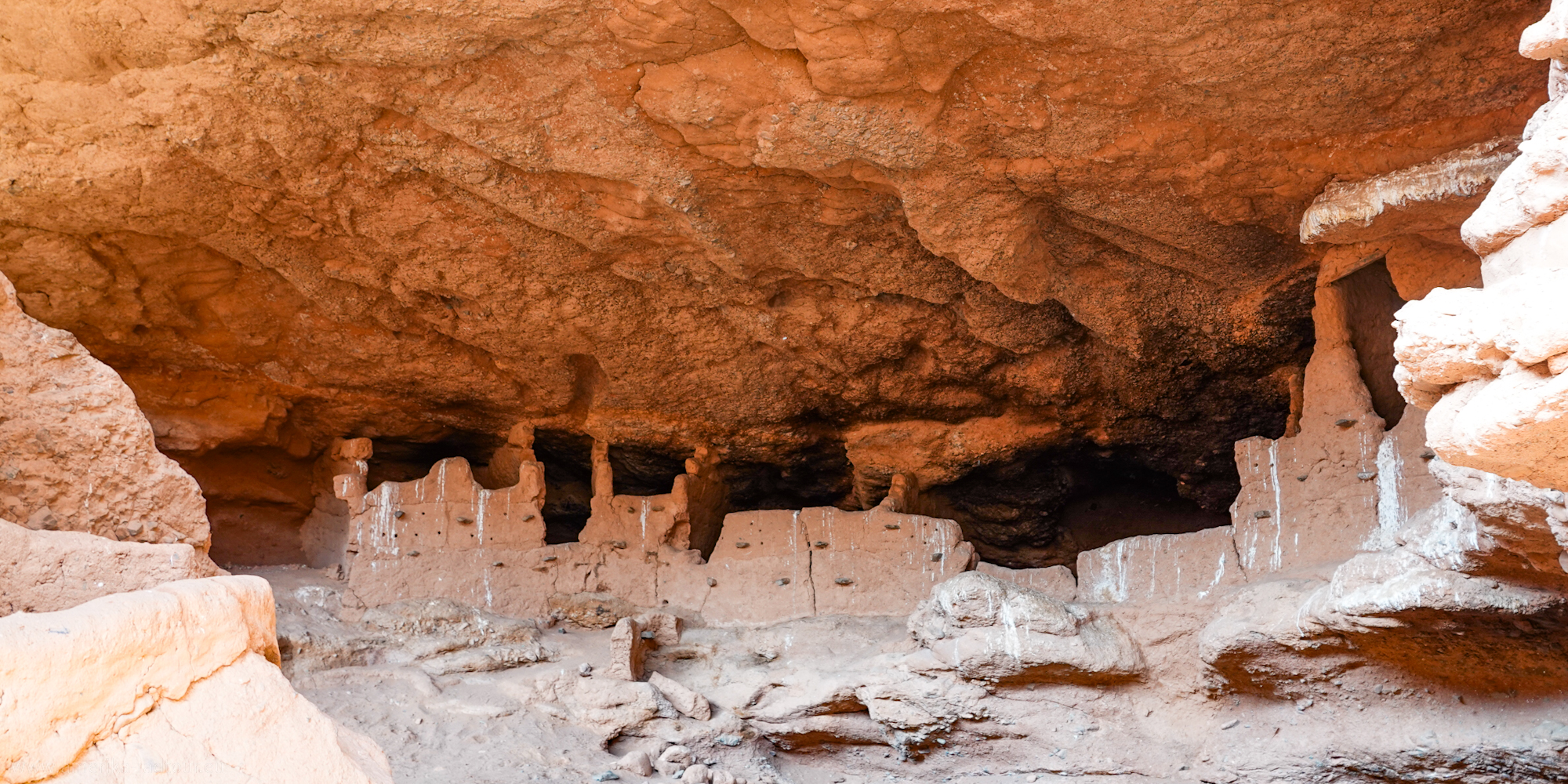 The Valles Calchaquiés were settled and made habitable by the Incas some time ago. In the 13th to 15th centuries AD, the Incas created storage facilities for grain and wool, which can still be visited today. About 500 m east of Ruta 40, hidden in a narrow gorge, there are silos that were used to store grain, beans and wool. The preserved storage volume is 50 m³, although it can be assumed that a large number of similar facilities have been preserved undiscovered in side valleys. The Valles Calchaquiés were settled and made habitable by the Incas some time ago. In the 13th to 15th centuries AD, the Incas created storage facilities for grain and wool, which can still be visited today. About 500 m east of Ruta 40, hidden in a narrow gorge, there are silos that were used to store grain, beans and wool. The preserved storage volume is 50 m³, although it can be assumed that a large number of similar facilities have been preserved undiscovered in side valleys. |
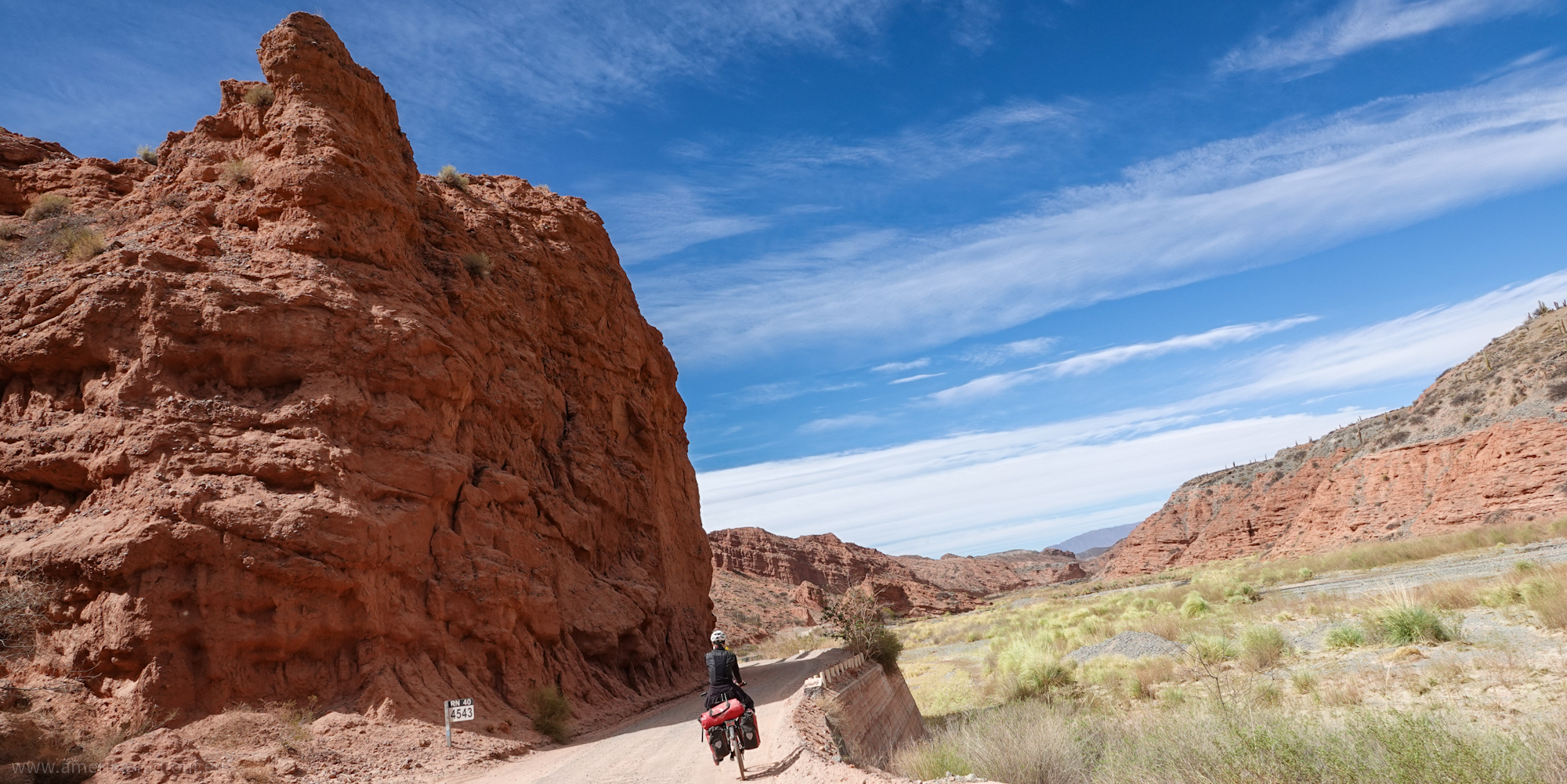 In some sections the river valley is very wide, but things can look completely different 5 kilometers further down the road. In some sections the river valley is very wide, but things can look completely different 5 kilometers further down the road. |
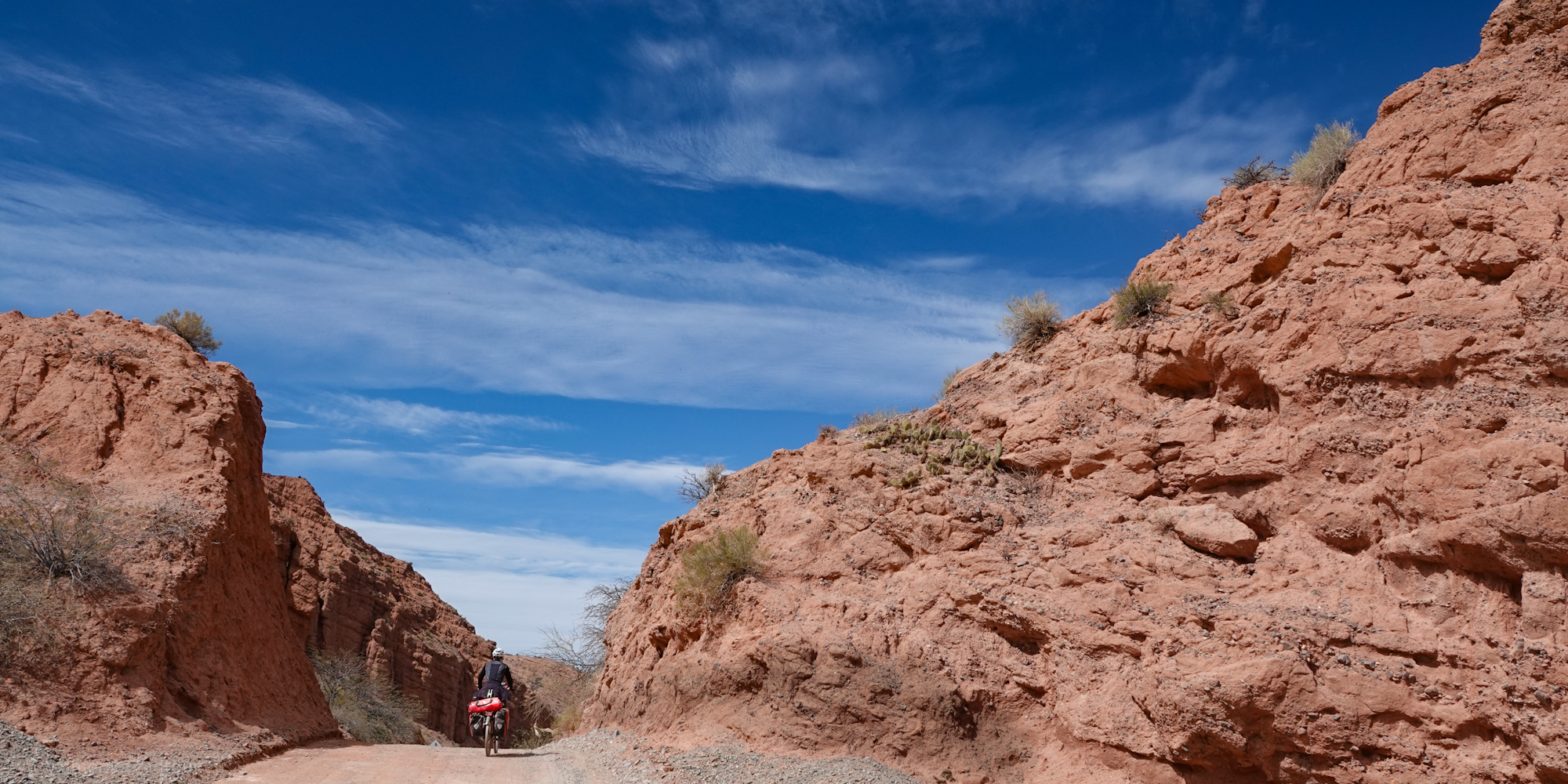 Ruta 40 runs along the east bank of the Calchaquí River and although it follows the course of the river, it always manages to add a few extra meters of elevation gain for the cyclist. This doesn't really slow us down, because we ride uphill and downhill at the same speed anyway on the corrugated iron of the road, which is regularly smoothed out with heavy machinery. Ruta 40 runs along the east bank of the Calchaquí River and although it follows the course of the river, it always manages to add a few extra meters of elevation gain for the cyclist. This doesn't really slow us down, because we ride uphill and downhill at the same speed anyway on the corrugated iron of the road, which is regularly smoothed out with heavy machinery. |
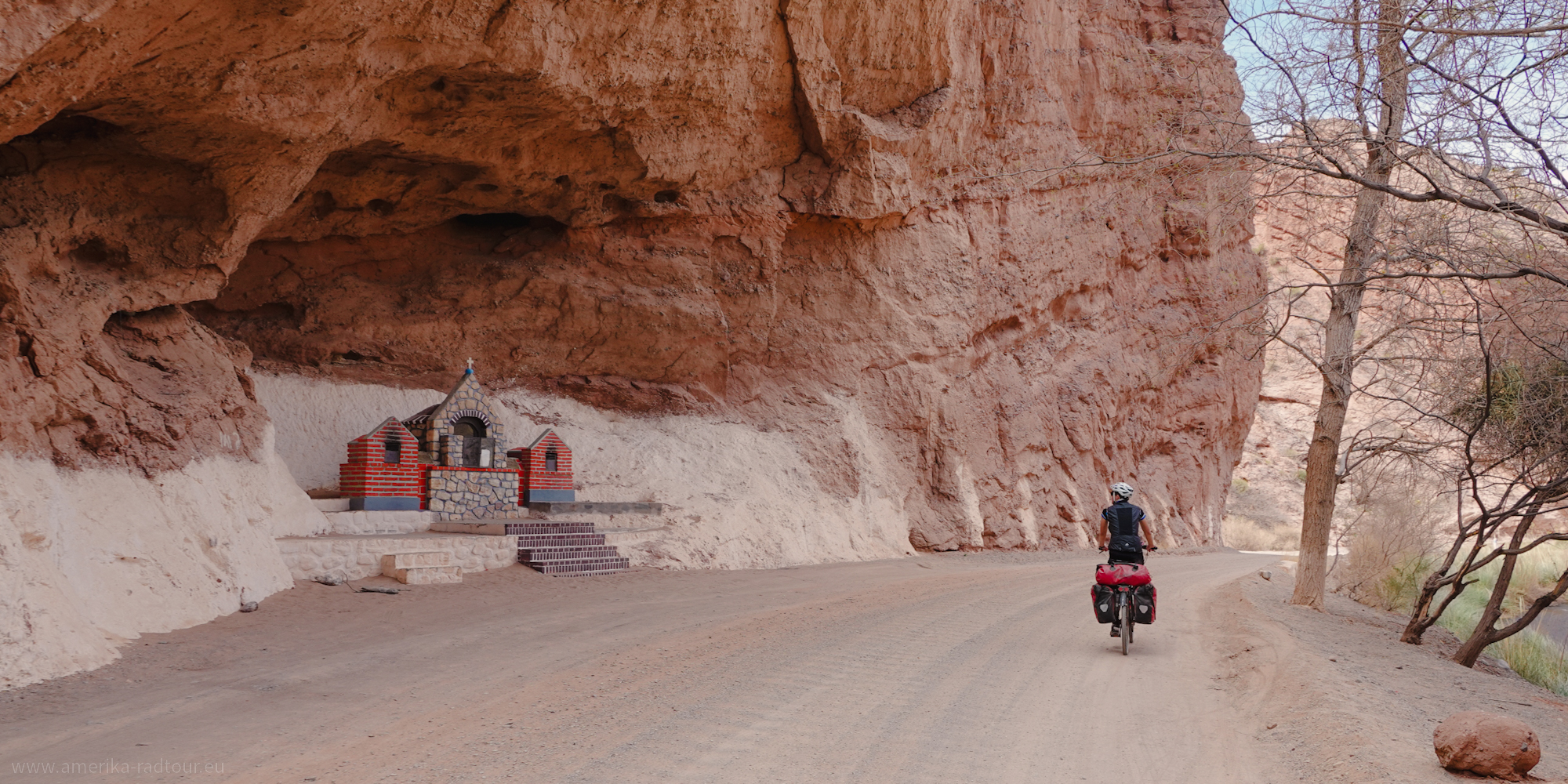 Despite the isolation of the region, the gods of the Incas were eventually replaced by the religion of the Europeans. Despite the isolation of the region, the gods of the Incas were eventually replaced by the religion of the Europeans. |
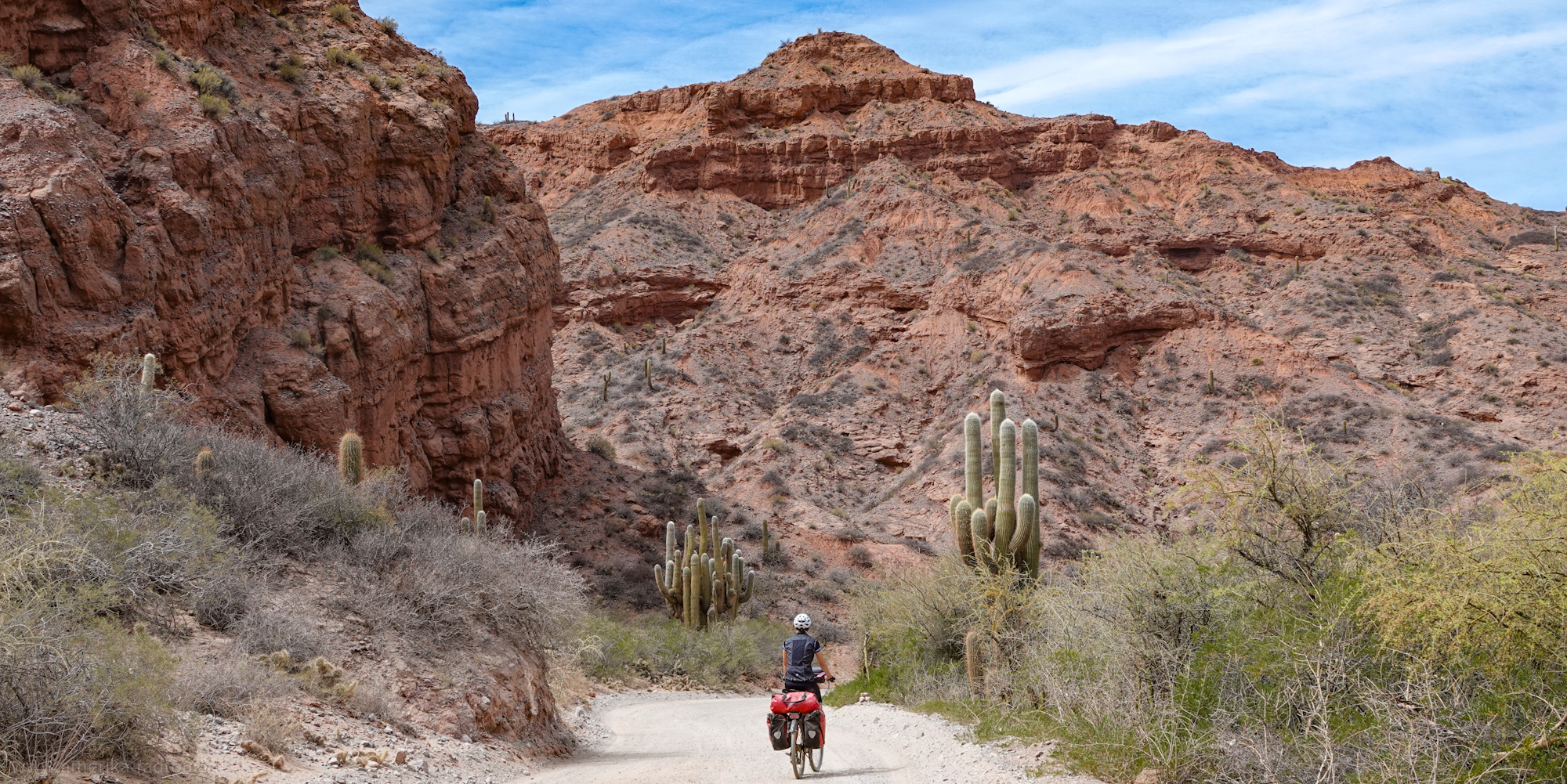 The further south we cycle and the lower the altitude above sea level, the greener the landscape becomes and the first cardones appear along the roadside. The cardón is a type of cactus that grows at an altitude of up to 3400m and characterizes the landscape in the Valles Calchaquí. The further south we cycle and the lower the altitude above sea level, the greener the landscape becomes and the first cardones appear along the roadside. The cardón is a type of cactus that grows at an altitude of up to 3400m and characterizes the landscape in the Valles Calchaquí. |
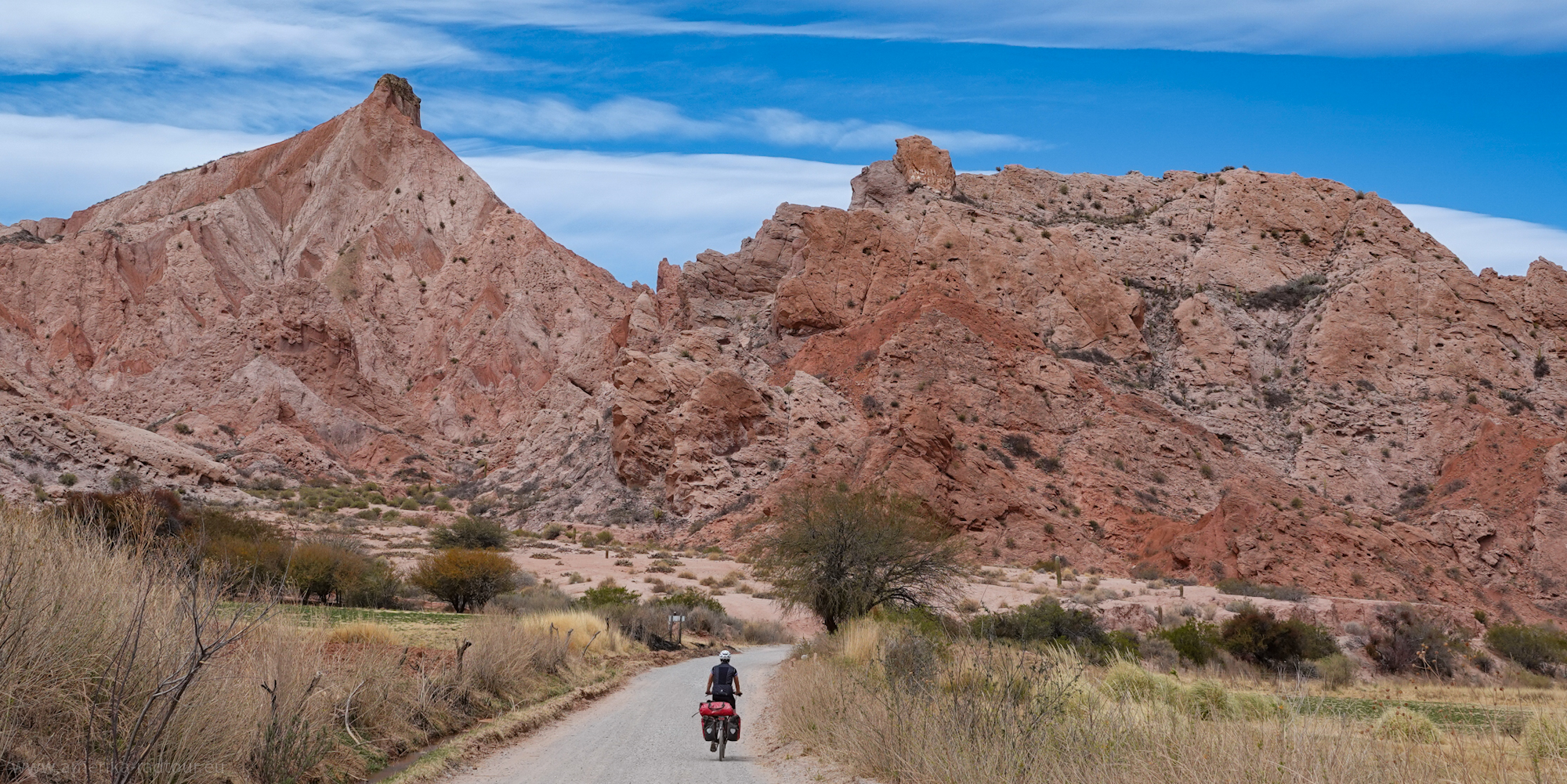 Ruta 40 winds its way through the valley and offers constant views of the red slopes of the mountains to the left and right of us. And in front of us. Unfortunately, that also happens. Ruta 40 winds its way through the valley and offers constant views of the red slopes of the mountains to the left and right of us. And in front of us. Unfortunately, that also happens. |
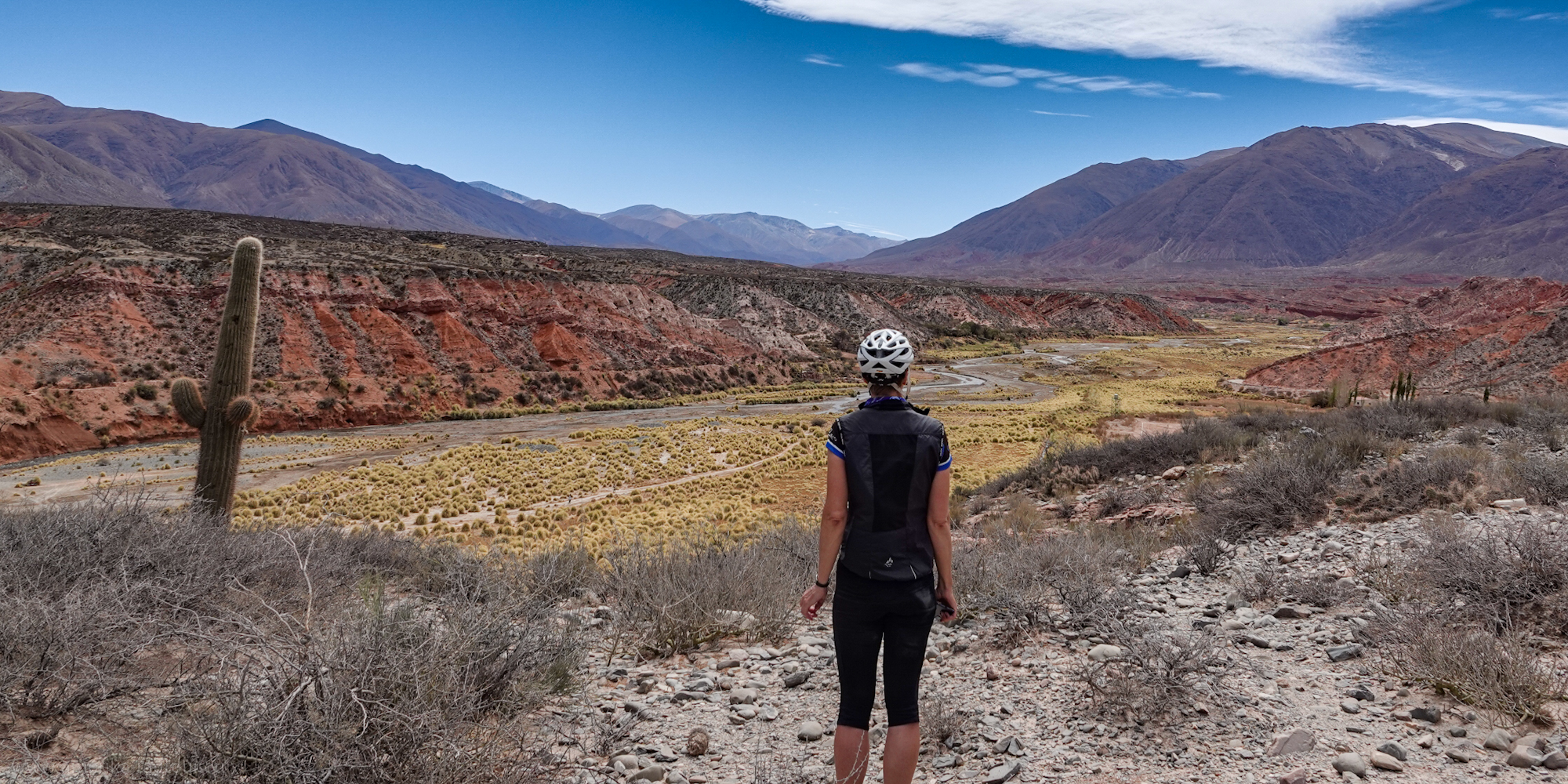 Looking back to the north. The valley is very wide and flat here. Even though the Calchaquí carries very little water, the course of the river can be clearly seen from the color of the vegetation. Looking back to the north. The valley is very wide and flat here. Even though the Calchaquí carries very little water, the course of the river can be clearly seen from the color of the vegetation. |
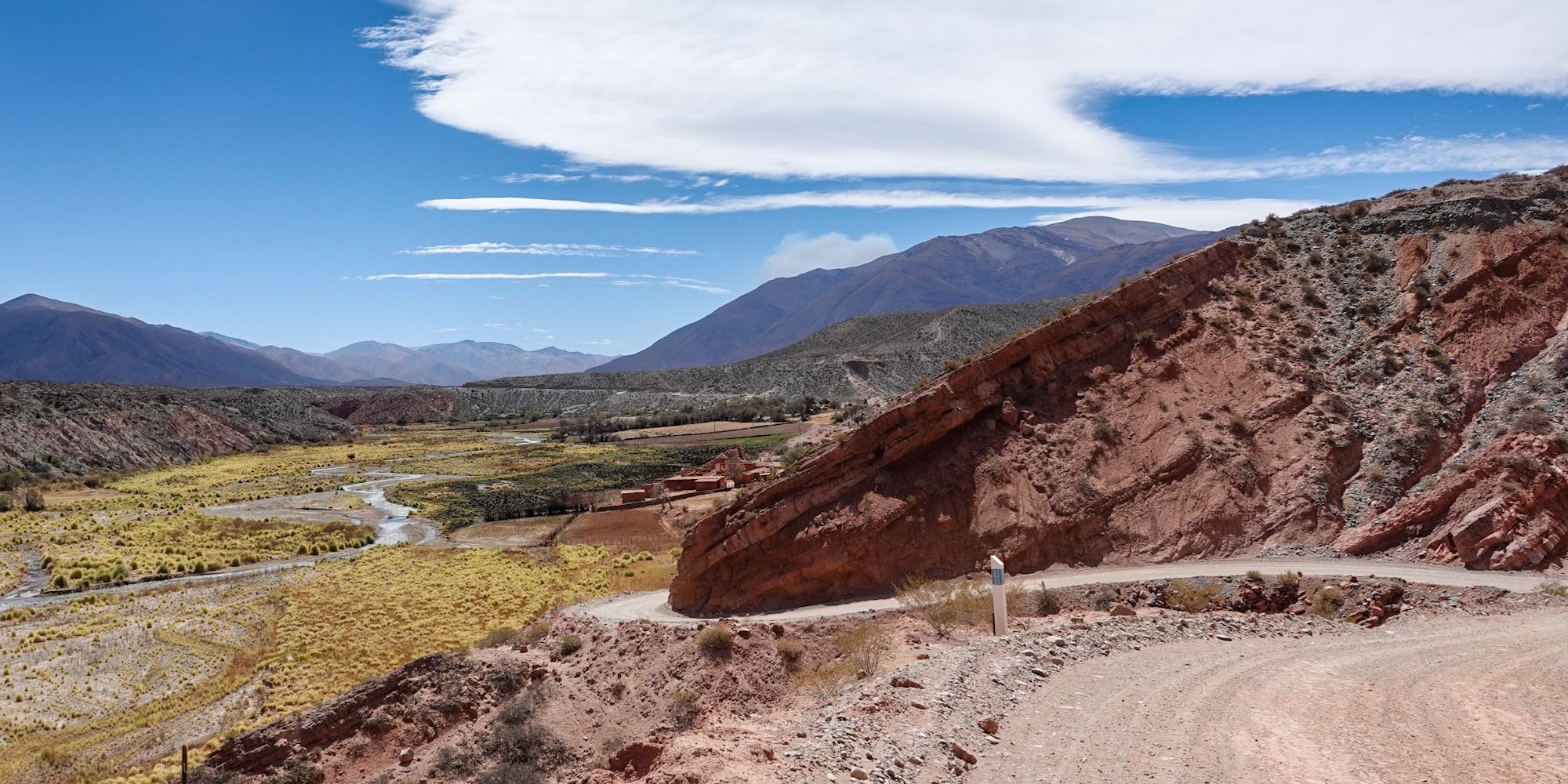 Here, too, the route of Ruta 40 repeatedly serves us with a short climb. Here, too, the route of Ruta 40 repeatedly serves us with a short climb. |
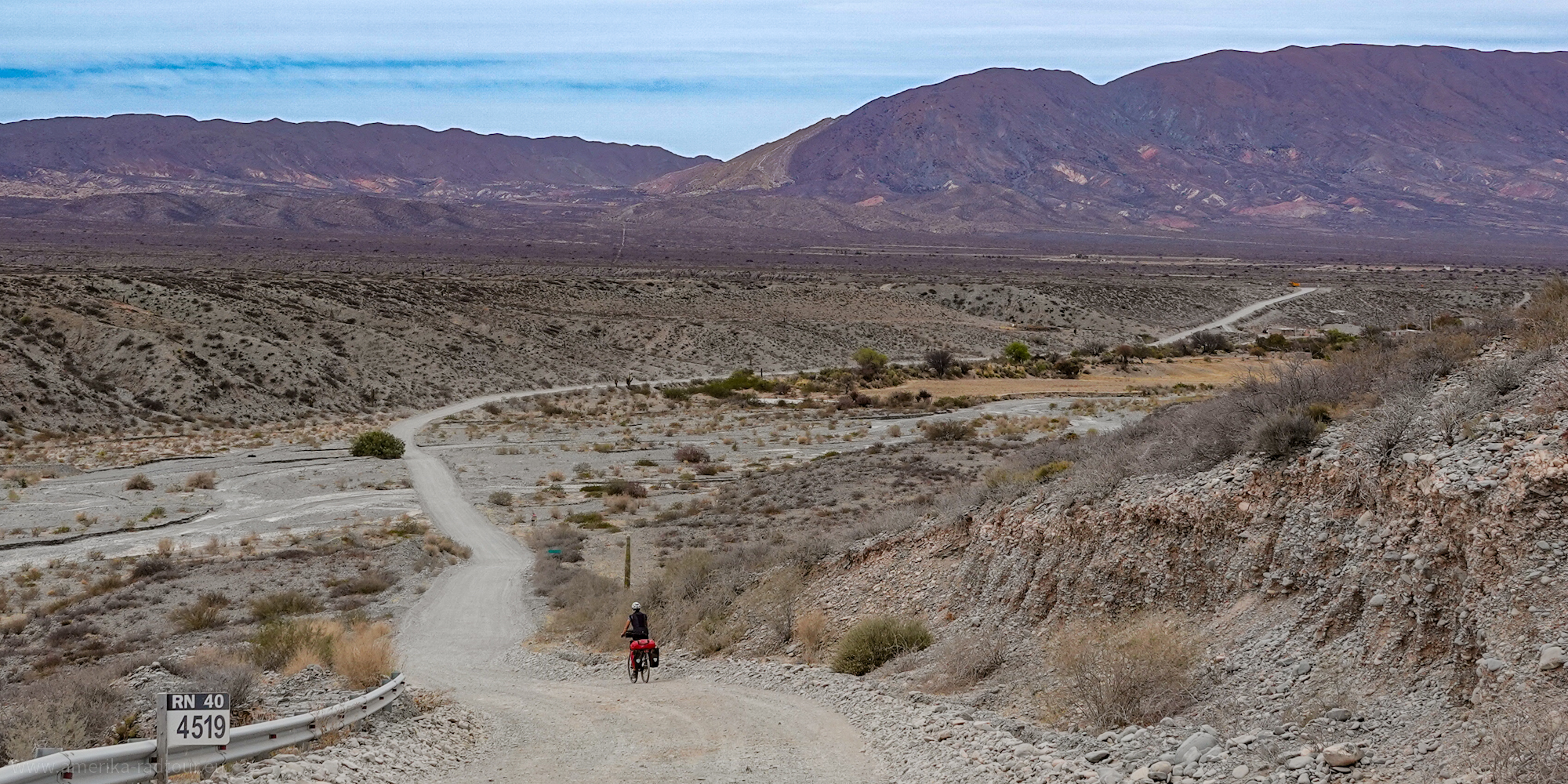 What is surprising is that the landscape one hill further suddenly looks completely different: while a few yards ago the slopes of the mountains were just a warm red, dusty grey suddenly dominates here. What is surprising is that the landscape one hill further suddenly looks completely different: while a few yards ago the slopes of the mountains were just a warm red, dusty grey suddenly dominates here. |
 At least there is color here too. The area is inhabited by a large number of parrots that live together in large groups. At least there is color here too. The area is inhabited by a large number of parrots that live together in large groups. |
 Our destination today is Payogasta, a small town in the Valles Calchaquí with around 500 inhabitants. The town is located in the part of the valley that is often visited by tourists coming from the south and therefore has sufficient infrastructure. Accommodation and dinner are easy to find and since we are in a wine region, we are also served something to drink. Our destination today is Payogasta, a small town in the Valles Calchaquí with around 500 inhabitants. The town is located in the part of the valley that is often visited by tourists coming from the south and therefore has sufficient infrastructure. Accommodation and dinner are easy to find and since we are in a wine region, we are also served something to drink. |




